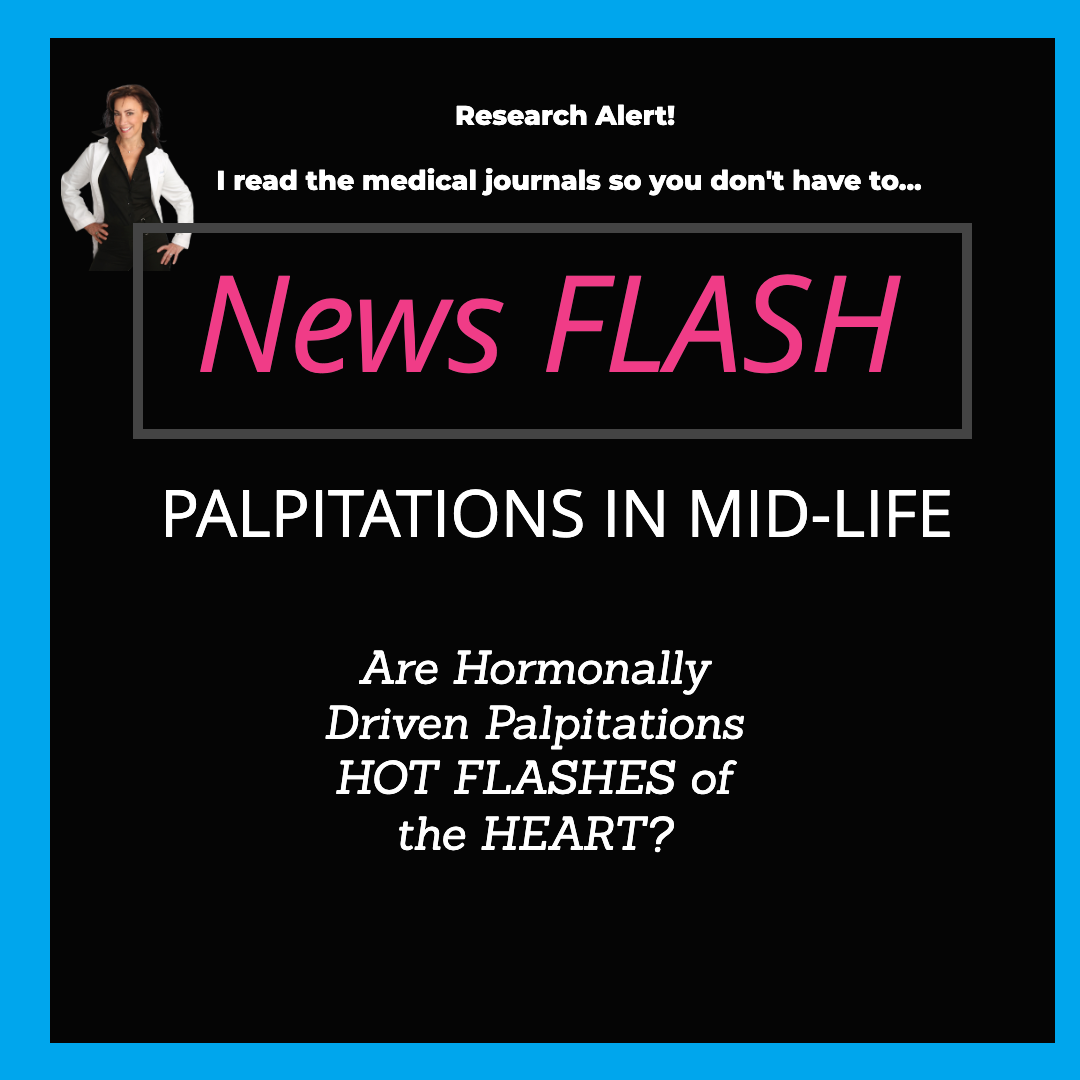Palpitations in Mid-Life Women
Research Alert! I read medical journals, so you don’t have to*…
*News FLASH -My reviews of recently published menopause research.
This study appeared in: Menopause: The Journal of The Menopause Society
Article Title: Palpitations in Mid-life women: The Menopause Racing Heart Pilot Study
Link: This is a subscription-only journal, but you can access the abstract
The Purpose of the Study
To compare midlife perimenopausal and postmenopausal women with and without palpitations on electrocardiogram findings, real-time palpitations reporting, and potential correlates.
Background
Anyone who reads romance novels knows that a racing, pounding or fluttering heart is an expression of anticipation, excitement, love, or fear…
But that is not the case for the 40% of perimenopausal and 54% of postmenopausal women who experience palpitations, a pounding, racing, or irregular heartbeat that accompany a hot flash, or appear out of nowhere. This experience is not just a disconcerting nuisance, but also creates fear that a racing heart might be a red flag for serious cardiac conditions.
Despite the prevalence of palpitations in perimenopause and post menopause women, there has been minimal and conflicting research that addresses the cause, correlations, and potential treatments.
In the Study of Women Across the Nation (SWAN), palpitations were not associated with markers of cardiovascular disease. However, in the Women’s Health Initiative (WHI), women who had severe palpitations had a 26% greater chance of cardiovascular disease and death, even when other risk factors were taken into consideration.
It is proposed that, like hot flashes, palpitations are a consequence of hormonally driven autonomic dysfunction.
Autonomic dysfunction is a general term that refers to an abnormality in the regulation of body functions that occur automatically. Breathing, body temperature, and blood pressure regulation are all examples of autonomic functions.
In menopausal women, vasomotor symptoms (hot flashes) are the most commonly experienced autonomic dysfunction. Typically, internal temperature control is regulated by our internal thermoregulatory zone, which is influenced by estrogen. The loss of estrogen disrupts this system, causing the body to try to cool down by losing heat through a hot flash, even when it does not need to.
Simply put, a hot flash occurs because your internal thermostat thinks you are in a sauna even though you are sitting in a comfortable 70-degree room.
Likewise, estrogen also appears to impact cardiac autonomic function, which is why it is proposed that the loss of estrogen can result in a disruption of heart rhythm.
Hormonal palpitations occur when the heart beats faster, even if there is no biologic reason to do so.
An electrocardiogram (EKG) is a routine diagnostic test that detects heart rhythm abnormalities that are associated with a risk of future stroke and cardiovascular disease, yet very little is known about the underlying electrocardiogram findings in mid-life women with self-reported palpitations.
The Study
Participants were between the ages of 46-62 and included:
15 midlife women with self-reported palpitations
15 midlife women without palpitations.
Participants wore an ambulatory electrocardiogram patch for 14-28 days
All participants recorded palpitations using an event button.
Participants also maintained a twice-daily diary to record palpitations and vasomotor symptoms.






